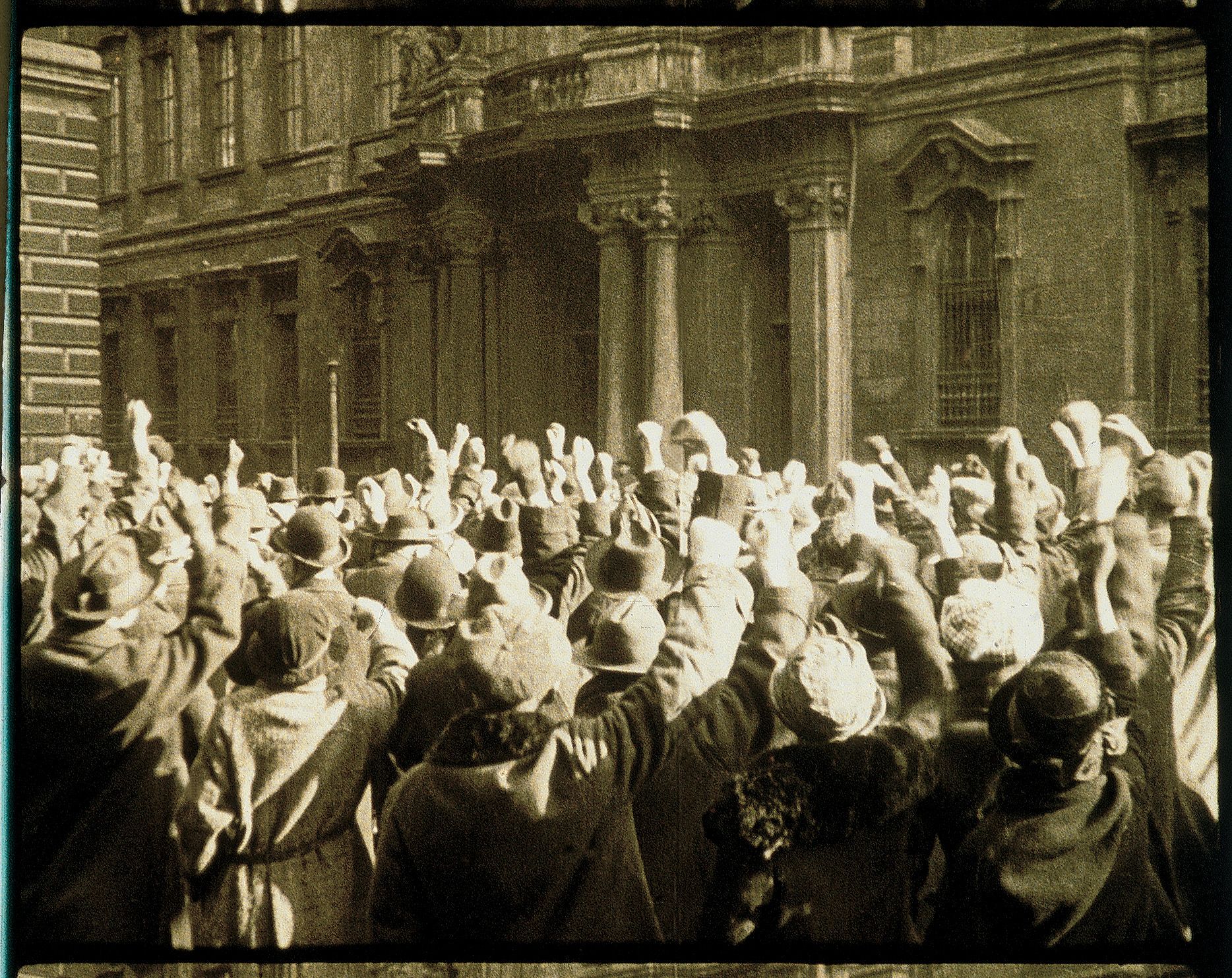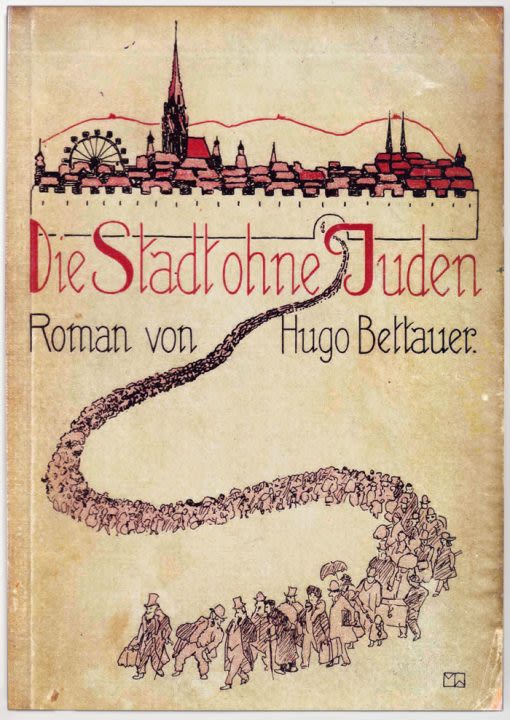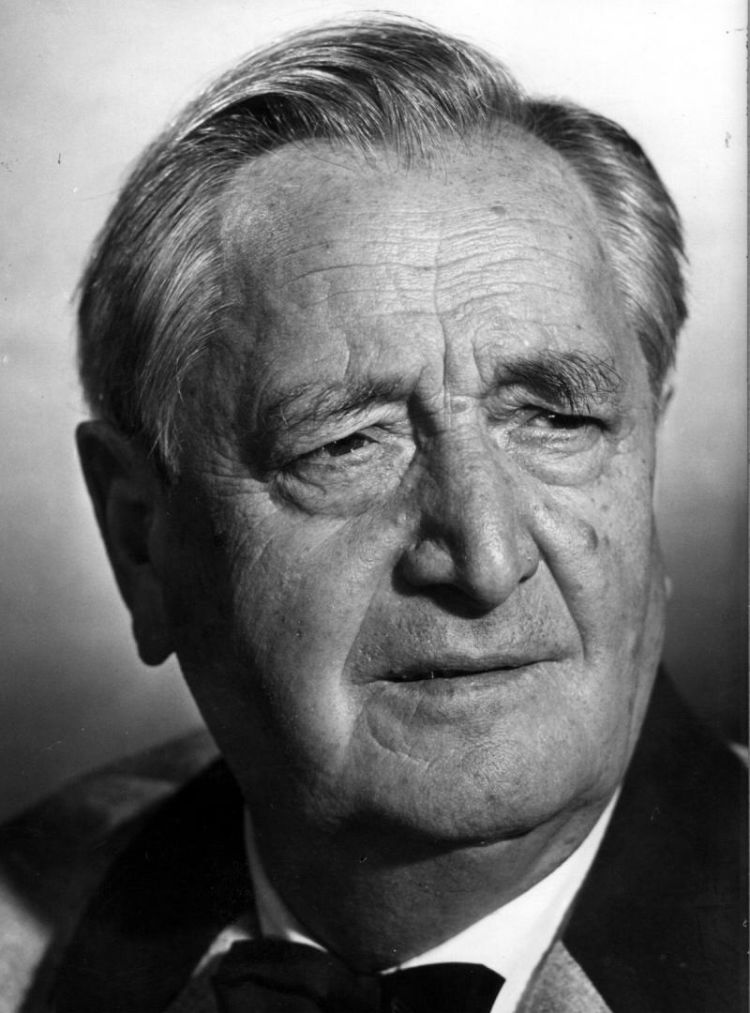The City Without Jews
Pamela Hutchinson investigates the history of one of the most prophetic, provocative films of the 20th century, reflecting on the importance of its restoration and its relevance today.

‘The Republic of Utopia is in turmoil…’
With these ominous words, The City Without Jews (1924) unleashes a caustic satire about anti-Semitism that uncannily foreshadows the rise of fascism in Europe. It remains one of the most prophetic and provocative films of the 20th century, one that speculates on a terrible possibility that became horribly real just a few years later and is likely the first movie to take a stand against anti-Semitism. For years it could not be seen, but now that it has been restored thanks to a lucky twist of fate and a surge of popular support, it can be shown again at a time when its bitter warnings are once again relevant.

The film is set in a city that looks a lot like contemporary Vienna, where a failing economy causes unrest and division among the people.
Ultimately, the Jewish population are scapegoated, amid a rising chorus of anti-Semitic slurs and blatant self-interest. Next, thanks to a chaotic political process muddied by fear, prejudice and sweeping rhetoric, parliament passes a law to expel all Jews from the city. The film examines the fallout of this decision – from the heart-breaking reality of families being ripped apart to a freefalling currency, damaged trading relationships and the end of the ‘elegant life’ as the fashion business crumbles.
In the following decade, the Third Reich would turn this fiction into fact, with unimaginably terrible consequences. The City Without Jews reminds us always to be watchful for alarm signals, and that it is never too late to push back against hate, and fight for compassionate solidarity.
A dangerous book

Hugo Bettauer is the man who wrote The City Without Jews, and the man who died for it. He was born into a Jewish family in Austria in 1872, although he converted to Christianity aged 18, when he joined the army. After leaving the military, he lived briefly in New York and Berlin, which is when he began his career as a reporter, exposing scandals of abuse and corruption within the establishment.
In the 1920s he turned to fiction, writing socially aware crime novels, while continuing his provocative work as an investigative journalist, even launching his own papers.
A handful of Bettauer’s novels were filmed in his lifetime, including The Joyless Street, a story of hardship and exploitation set in a slum alley in Vienna during the post-war hyperinflation. That film was made by the Austrian director GW Pabst in 1925, with Greta Garbo, Asta Nielsen and Werner Krauss in starring roles.
The City Without Jews was Bettauer’s best-known and most controversial novel though, selling 250,000 copies in 1922, its first year of sale. It depicts how the expulsion of the Jews causes first celebration, then financial collapse, and the defeat of the anti-Semites, as the law is repealed. It was a timely subject.
The Jewish population of Austria was concentrated in the capital, Vienna: around 200,000 people, including many leading figures in arts and culture. But there was also a strong anti-Semitic element in the city, with many Jews being physically attacked on the streets and discriminated against at work – events that are clearly mirrored in the film.
Karl Lueger, Mayor of Vienna from 1897-1910, had established several anti-Semitic policies, including prohibiting Jews from certain civic jobs. Austrian national Adolf Hitler was just one of many people to absorb this growing prejudice during his time in the city, and through the 1910s and 1920s, nationalist and anti-Semitic writers railed against the Jewish influence on culture. The pan-Germanic movement objected to Jews on ethnic grounds – an openly racist characterisation of Jewish people as a non-European foreign element.
Those anti-Semitic voices took exception to Bettauer, and his book. He was labelled a ‘red poet’ a ‘corruptor of youth’ and an Asphaltliterat or ‘gutter hack’. On 10 March 1925, one young Nazi party member, an unemployed dental technician called Otto Rothstock, came to Bettauer’s office and shot him five times at point-blank range. The author died sixteen days later as a result of his wounds. At trial, Rothstock defended the assassination as his attempt to protect German culture. He was pronounced guilty, but with diminished responsibility due to insanity – after a few months in jail he was transferred to a psychiatric clinic, and released around a year later, deemed to be fully cured.

Portrait of Hugo Bettauer
Portrait of Hugo Bettauer

Book jacket for Hugo Bettauer's 'Die Stadt ohne Juden' (1922)
Book jacket for Hugo Bettauer's 'Die Stadt ohne Juden' (1922)

A wider audience, a bigger controversy

Notorious as Bettauer’s novel was, the filmed version arguably widened its influence, even if the writer was furious about the adaptation. The film’s director, Hans Karl Breslauer, was born in Vienna in 1888, the son of a coffee-house owner. Instead of taking over the family business, he became an actor, and in 1910 he moved to Berlin, and the film industry, where he worked as a screenwriter and then director for several different studios.
At this time, the German film industry was well on its way to becoming the biggest in Europe. The growth was due to factors including the ban on imported films during the First World War, a partial nationalisation of the industry from 1917 and the government’s growing confidence in the cinema as a tool of propaganda. Although the 1920s brought financial challenges, the wealth of talent and ambition in the Weimar movie industry was extraordinary, and some of the world’s most enduring and influential films were made there, by directors including Fritz Lang and FW Murnau.
Two major artistic movements influenced German silent cinema of this period: Expressionism, in which reality is distorted to reflect the anguished or diseased psychology of the film’s protagonists, and New Objectivity, a realist mode which unflinchingly depicts social inequality and deprivation. Breslauer combined both these modes in his terrific, and darkly funny, adaptation of Bettauer’s novel.
When Breslauer began work on The City Without Jews at the end of 1923 he was relatively well established within the industry, with his own production company, HKB Films.
He adapted the novel for the screen with Ida Jenbach, a Jewish playwright and screenwriter, and the duo made some significant changes to the original work, doubtless with an eye on mollifying the censors, and broadening the film’s popular appeal.
The setting was switched from Vienna to ‘Utopia’, a barely disguised version of the capital, and a happier, more placatory ending was added, infuriating Bettauer. Nevertheless, the film contains many haunting images direct from the novel, which uncannily foreshadow the horrors of the holocaust, including the phalanx of freight trains borrowed to carry the expelled Jews out of the city.
It’s a terribly sad postscript to the film that Jenbach, who went on to write many well-received plays in the 1920s and 1930s, died on an unknown date during the Second World War, either in the Minsk ghetto or a concentration camp.
The City Without Jews was released in 1924 and was a box-office success internationally as well as in Austria. It marks the screen debut of Austrian actor, Hans Moser, who went on to become a popular comedy star in German cinema, as the buffoonish and anti-Semitic Councillor Bernart.
In real life, Moser was far from an anti-Semite, and refused to divorce his Jewish wife during the Nazi regime. By contrast, German actor Johannes Reimann, who plays the film’s Jewish hero Leo, became a Nazi party member in the 1930s and Joseph Goebbels honoured him with the rank of Staatsschauspieler or ‘State Actor’ in 1939. He notoriously performed at a cabaret show for the staff of the Auschwitz concentration camp in 1944.
For all its grim portents, the film is remarkably funny, with many fanciful elements, including the sequence towards the end in which Bernart is held in a mental asylum, driven mad by the ‘delirium’ that he is really Jewish – which is where Breslauer exploits some classically Expressionist set design.

Still from 'Die Stadt ohne Juden'
Still from 'Die Stadt ohne Juden'

Hans Moser
Hans Moser

Johannes Riemann
Johannes Riemann

The film’s consistent mockery of the anti-Semitic characters, presenting their prejudices as nothing more than ill-considered greed and racism, naturally angered the Nazis, and party members threw stink bombs into the cinemas while it was playing – as they would also do years later during screenings of the pacifist film, All Quiet on the Western Front (1930).
Despite the fact that Bettauer disowned the film, due to its deviations from the novel, it was the popularity of the movie that prompted the Nazi party to ramp up its vilification of the writer, leading to his brutal and tragic death a year later. The film’s final public screening was in Amsterdam in 1933, at the Royal Theatre Carré, where it was shown as a protest against Hitler’s appointment as German Chancellor.
As far as is known, Breslauer never made another film – he turned his hand to comic writing, eventually joining the Nazi Party himself in 1940, and moved back to Austria after the war. He died in Salzburg, obscure and impoverished in 1965.
Rescued by the crowd

The City Without Jews lost its voice as the Nazis took power across Europe, and for decades it was thought to be lost for ever, although researchers were desperate to locate a print.
In 1991, a truncated copy was discovered in the Netherlands Film Museum archives, possibly the very print that had been shown in Amsterdam in 1933. Though this was a remarkable find, this version was missing some crucial sequences, possibly as a result of censorship, including the ending, Bernart’s mental breakdown and scenes showing the depth of anti-Semitic feeling in the city. The lost film was warmly received at the Vienna International Film Festival, however, and could now be screened, studied, and compared to the source novel, if not viewed as the filmmakers intended.
The discovery of the missing footage at a flea-market in Paris in 2015 changed all that, however, but not without presenting its own challenges. The new footage was on nitrate film, flammable and unstable. To save this footage for posterity would take swift action. To reconstruct the original film, restore it, and digitise it so it would be widely shown once more would take a lot of time and money.
The Austrian Film Archives threw open a request to the public, using the web to crowdfund the €75,000 needed to restore this vitally important movie – and the film’s contemporary relevance doubtless helped to galvanise contributors. Daily donations to the campaign doubled after far-right candidate Norbert Hofer came close to triumph in the Austrian elections and a substantial sum was provided by an American Jewish foundation the day after Donald Trump was elected President.
A stand against hate

The reconstruction and restoration of The City Without Jews is more than just a triumph for film history. As the exhibition accompanying the restoration’s premiere in Vienna earlier this year shows, its message continues to resonate in a political climate dominated by scapegoating of minorities and immigrants and the rise of the far right across Europe and America. The history of the film and the people who made it reminds us exactly why it should be seen as widely as possible.
Olga Neuwirth, who has composed the new orchestral score for the Barbican screenings, says: ‘This film is not just an old silent movie but a politically engaged masterpiece.’ For Neuwirth, the film demonstrates why hate speech should never be excused or normalised. ‘Now that hollow formal retorts are more and more being made by politicians in an attempt to excuse racism and the daily incitement of hate, the time has come to put an end to dumbing down and trivialising the terminology assailing us.’
'The history of the film and the people who made it reminds us exactly why it should be seen as widely as possible'
The film takes on a new, even more specific, meaning in Britain, beyond the resurgence of anti-Semitism and Islamophobia in daily life and political debate. While the aftermath of the Brexit referendum continues to divide the country, The City Without Jews also dramatizes a potential outcome of hurriedly enforced legislation and anti-immigrant policies that separate households and turn citizens into outsiders.
In The City Without Jews, the councillors of Utopia depend on the capricious financial support of an American anti-Semite, Mr Huxtable, and hoped-for deals with foreign powers that never materialise. Ultimately the ‘Jewish Law’ isolates rather than strengthens the turbulent republic, and popular opinion inevitably swings back to the inclusive policies of yesteryear.
As the film concludes:
‘We are all brothers … We are all human beings and must learn to walk hand in hand.’
Die Stadt ohne Juden (PG): A Dystopian Prophecy of Intolerance
Thu 15 Nov, Milton Court Concert Hall
Olga Neuwirth presents a new score to this startlingly prescient silent film from inter-war Vienna that chillingly imagines – and astonishingly predicts – the consequences as a city succumbs to intolerance.
Book tickets
Part of The Art of Change, a season that explores how the arts respond to, reflect and potentially effect change in the social and political landscape
About the author
Pamela Hutchinson is a writer, critic and film historian who contributes regularly to Sight & Sound, the Guardian and Radio 4. She edits Silent London and wrote the BFI Film Classic on Pandora's Box.
Film stills courtesy of FilmArchiv Austria.


